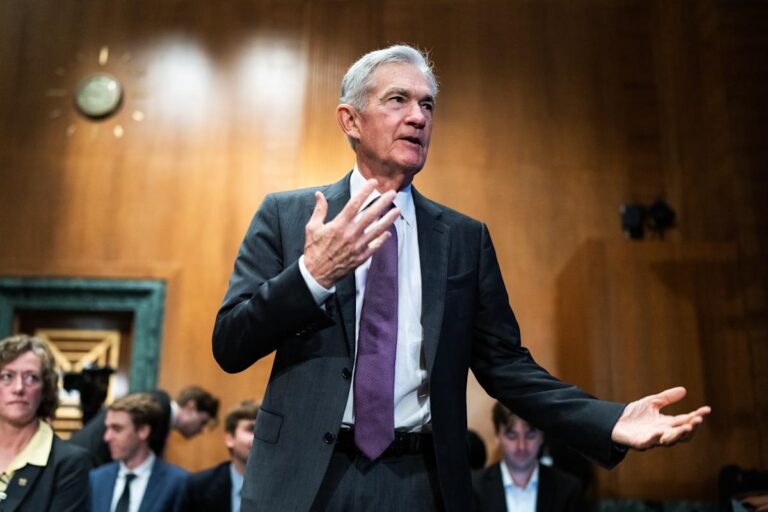Investors are growing increasingly confident that the Federal Reserve will cut interest rates by the end of the year, as labor market data has shown signs of cooling in recent weeks.
Data from the Department of Labor released Thursday showed 1.974 million continuing claims were filed in the week ending June 14, up from 1.937 million the week prior and the highest level seen since November 2021. Economists see an increase in continuing claims as a sign that those out of work are taking longer to find new jobs.
“Employment risks are trending higher,” Jefferies US economist Thomas Simons wrote in a note to clients on Thursday.
Elsewhere in economic data on Thursday, the third estimate for gross domestic product (GDP) for the first quarter showed that US economic growth contracted at an annualized rate of 0.5%, more than the 0.2% previously reported.
Following Thursday’s data releases, markets were pricing in a 27% chance the central bank cuts interest rates at its next meeting in late July, up from a 12.5% chance seen last week, per the CME FedWatch Tool. Odds of a cut by the end of September have also surged, with markets now pricing in a 92% chance the central bank will have lowered rates by then, up from a 64% chance seen just a week ago.
In a speech on June 23, Federal Reserve governor Michelle Bowman noted that although the labor market is showing signs of strength, it “appears to be less dynamic.”
“With inflation on a sustained trajectory toward 2%, softness in aggregate demand, and signs of fragility in the labor market, I think that we should put more weight on downside risks to our employment mandate going forward,” Bowman said.
Read more: How the Fed rate decision affects your bank accounts, loans, credit cards, and investments
Bowman said she’d potentially support lowering rates as soon as July as long as inflation remains “contained,” joining Fed Reserve governor Christopher Waller, who recently made a similar case.
With seven officials forecasting no interest rate cuts this year and eight penciling in two cuts, there’s clear debate about whether rising inflation or a weakening labor market will drive the Fed’s policy decisions over the next few months. While testifying in front of House lawmakers on Tuesday, Fed Chair Jerome Powell stressed the central bank is “well-positioned to wait” before moving interest rates.
A July or September cut — there is no August Fed meeting — has not yet become a consensus call among Wall Street economists, but many have argued that the odds of the central bank cutting rates in the coming months are on the rise.
Story Continues
